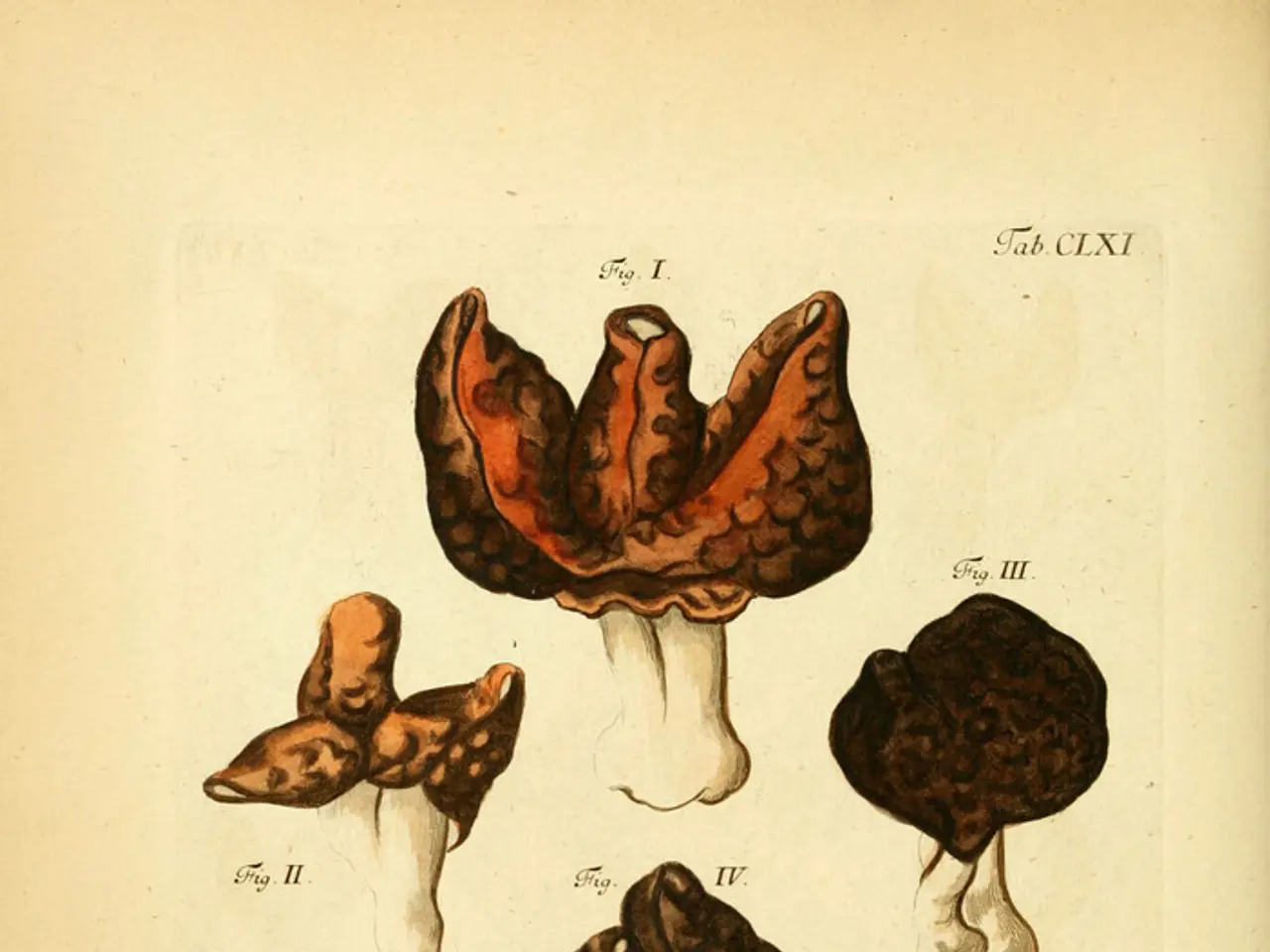Magic Mushrooms' Psychedelic Compound Evolves Twice in Nature
Scientists have made a remarkable discovery: two unrelated groups of mushrooms, the Psilocybe and Inocybe genera, have independently evolved to produce the psychedelic compound psilocybin. This is an example of convergent evolution, where unrelated organisms develop the same feature independently.
Psilocybin, found in 'magic mushrooms', has been ingested by humans for thousands of years. Now, scientists are exploring its potential as a treatment for mental health issues like depression, anxiety, and PTSD. The interest from pharmaceutical companies is growing, seeking a reliable source for this promising compound.
The Leibniz research team in Jena found that Psilocybe mushrooms use one set of enzymes to create psilocybin, while Inocybe mushrooms, also known as fibercap mushrooms, use a completely different set. This discovery could provide new tools for biotechnological production of psilocybin. The reasons behind these mushrooms producing psilocybin are still unclear, but theories suggest it may deter predators.
The independent evolution of psilocybin production in two unrelated mushroom groups opens avenues for further research and potential biotechnological applications. As clinical trials continue, understanding the enzymes involved could lead to more efficient production methods for this promising compound.
Read also:
- Impact of a Government Shutdown on Citizens
- Medical Specialist Based in Visakhapatnam
- Individuals in New York afflicted by Legionnaires' disease have legitimate legal entitlements. Here's some essential information on the matter.
- Toxic Shock Syndrome: Signs, Origins, Tampon Connection, and Further Details








